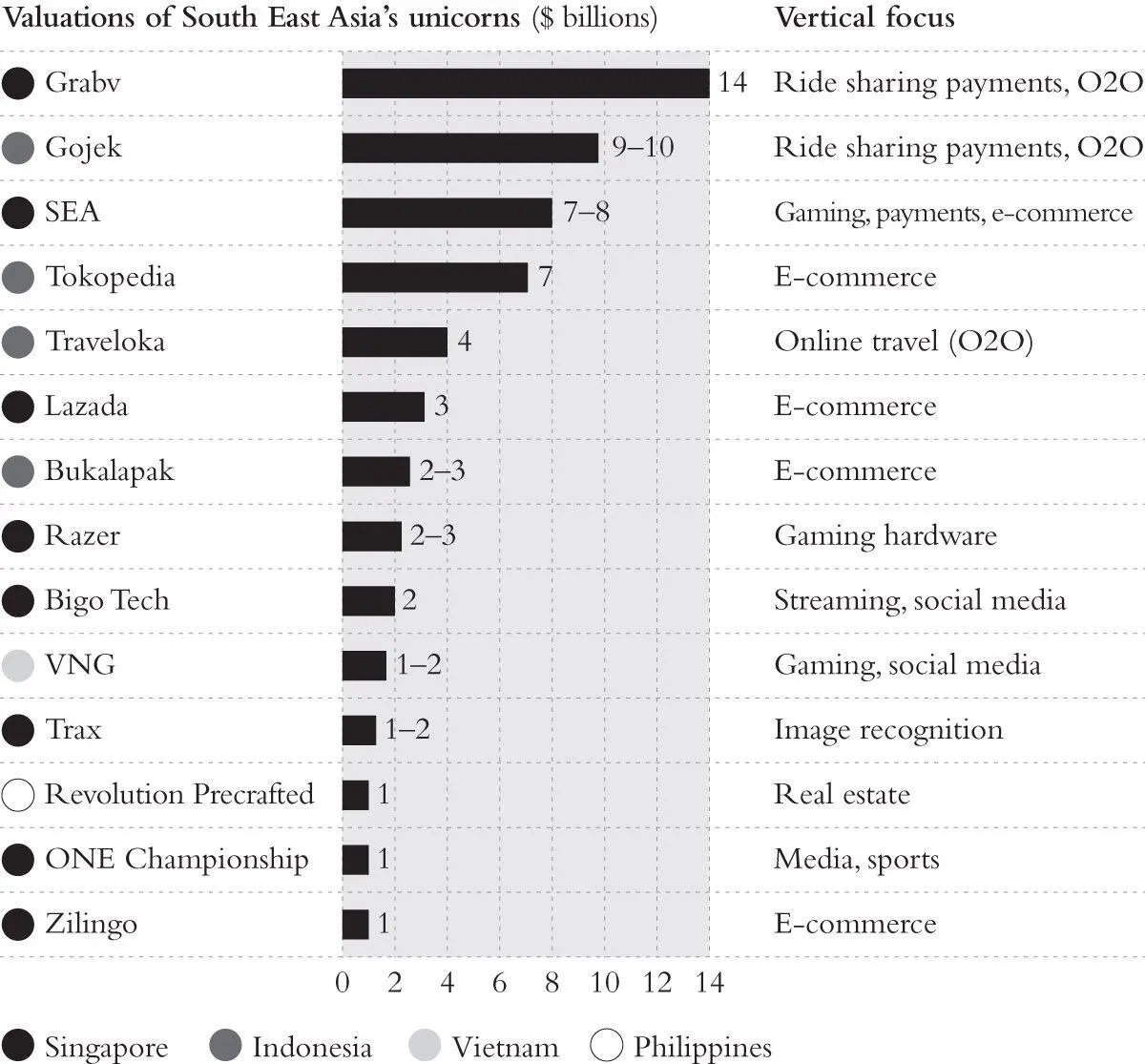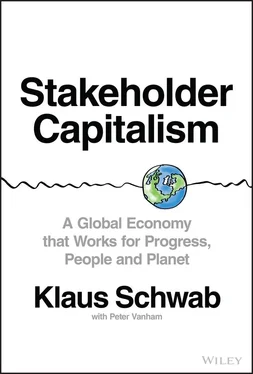Klaus Schwab - Stakeholder Capitalism
Здесь есть возможность читать онлайн «Klaus Schwab - Stakeholder Capitalism» — ознакомительный отрывок электронной книги совершенно бесплатно, а после прочтения отрывка купить полную версию. В некоторых случаях можно слушать аудио, скачать через торрент в формате fb2 и присутствует краткое содержание. ISBN: , Жанр: economics, на английском языке. Описание произведения, (предисловие) а так же отзывы посетителей доступны на портале библиотеки ЛибКат.
- Название:Stakeholder Capitalism
- Автор:
- Жанр:
- Год:неизвестен
- ISBN:9781119756149
- Рейтинг книги:4 / 5. Голосов: 1
-
Избранное:Добавить в избранное
- Отзывы:
-
Ваша оценка:
- 80
- 1
- 2
- 3
- 4
- 5
Stakeholder Capitalism: краткое содержание, описание и аннотация
Предлагаем к чтению аннотацию, описание, краткое содержание или предисловие (зависит от того, что написал сам автор книги «Stakeholder Capitalism»). Если вы не нашли необходимую информацию о книге — напишите в комментариях, мы постараемся отыскать её.
Individual agency:
A clearly defined social contract:
Planning for future generations:
Better measures of economic success: Stakeholder Capitalism: A Global Economy that Works for Progress, People and Planet
Stakeholder Capitalism
Stakeholder Capitalism — читать онлайн ознакомительный отрывок
Ниже представлен текст книги, разбитый по страницам. Система сохранения места последней прочитанной страницы, позволяет с удобством читать онлайн бесплатно книгу «Stakeholder Capitalism», без необходимости каждый раз заново искать на чём Вы остановились. Поставьте закладку, и сможете в любой момент перейти на страницу, на которой закончили чтение.
Интервал:
Закладка:
Another reason for their sustained economic success is that they're an agreeable neutral territory for the world's two major economic powers. Because of the ongoing trade tensions between the US and China, many companies are looking to shift production away from China to avoid tariffs. ASEAN, which has so far stayed out of the trade wars, has proven an attractive alternative. Vietnam has been a clear winner in this regard. 137
The third and final reason for its continued positive outlook is the mix of regional integration and technological innovation. ASEAN is arguably the most successful regional economic community after the European Union. Regional trade is rising and integration increasing. And it also created several homegrown tech unicorns, a term to describe privately held companies with a valuation of $1 billion or more. Singapore-based ride hailing app Grab is the most famous, but Indonesia's Go-Jek, Tokopedia, and Traveloka, several Singaporean start-ups, Vietnam's VNG, and the Philippines’ Revolution Precrafted also achieved that hallowed status (at least before the COVID crisis), according to consulting firm Bain & Company 138( Figure 3.2).
Growth in India
Another country that was experiencing strong growth prospects before the COVID crisis hit is India, though it was harder hit than most during the pandemic. For decades after its independence, the country struggled with the so-called Hindu rate of growth, a euphemistic way of saying “low growth.” Despite enthusiasm about its independence and young workforce, India's economy never achieved the runaway success of the Asian Tigers or China. The protectionist policies it pursued, alongside the red tape of the so-called Licence Raj system, which effectively created monopolies, precluded it from making such progress.

Figure 3.2 By 2019, Southeast Asia Had at Least 14 Tech “Unicorns”
Source: Redrawn from Bain & Company, November 2019.
India also remained largely unindustrialized, with hundreds of millions of people living on the countryside, earning only what they could get from small-scale farming. The resulting socioeconomic picture until well into the 1990s was one of a massive rural population living close to or under the poverty line and another large part of the population trying to come by in the country's mega-cities, which nevertheless offered less opportunities for advancement than those in Japan, the Asian Tigers, or China.
Starting the 1980s, however, some entrepreneurs started to gradually change the face of this rural, under-industrialized India. As the computer revolution took off, some entrepreneurial individuals, often hailing from the country’s Indian Institutes of Technology (IIT), managed to build some of the world’s most successful IT outsourcing firms, such as Infosys and Wipro. Leading industrialists also added to the burgeoning tech scene with the creation of offshoots such as Tata Consultancy Services (TCS) (founded already 1968) and Tech Mahindra.
A number of industrial companies also emerged, initially focusing on basic products in raw materials, chemicals, and textile but later expanding to modern technologies such as telecommunication and the Internet. The best-known and largest example is probably Reliance Industries, led by Mukesh Ambani. By diversifying and investing in large new projects centered on Fourth Industrial Revolution technologies, Reliance and other large Indian conglomerates are playing a substantial role in ushering in the digital era in India. Their scope is comparable to that of the large Chinese tech firms, as they offer everything from e-commerce to banking and from Internet to TV.
Before India got hit by COVID, the country was making structural efforts to do away with its checkered macroeconomic legacy. Under Prime Minister Modi, in office since 2014, the central government made substantial market reforms, including a unified tax on goods and services, allowing for foreign investment in a variety of industries, and running a more transparent auction of the telecom spectrum. 139GDP growth in years before 2020 hovered between 6 and 7 percent per year, putting it on par or even higher than that of China.
COVID, however, halted that ascent abruptly. India's economy was expected to contract by over 10 percent, putting it on par with Spain and Italy as the worst hit economies, the IMF said in late 2020. 140And that top-line economic decline hid an even more dramatic situation on the ground, as millions of the country's poorest city dwellers felt forced to return to rural home villages on foot when the country went in lockdown on March 24. With 10 million migrant workers returning home, 141it became one of the largest intra-country migrations of the 21st century so far. Many of them walked for weeks to their home provinces, in the hopes of being better off there during the crisis. But the long journey brought many additional problems, not in the least for their physical health and safety.
Yet there are also a few reasons to remain optimistic about India in the longer term. The country will soon have the largest working-age population in the world (25 years old on average), and its government has done away with some of the biggest impediments to growth. The Licence Raj, which effectively rationed supplies and limited competition for many goods before, was abolished, and more steps toward a unified internal market are underway.
Still, many of its 1.3 billion people are underprepared to join a modern workforce. One major reason for this is the literacy rate in India, which is still only 77.7 percent in 2020, 142caused in large part by a low schooling rate among girls. It does not need to be this way. In the US, Indian immigrants are already heading some of the largest tech firms in the world, leaders like Sundar Pichai at Google, Satya Nadella at Microsoft, and Shantanu Narayen at Adobe Systems. In recent years, tech unicorns such as Paytm and Flipkart were started in India.
But to really reach its potential, the country will have to make strides in education, health care, and infrastructure, so that all its people have a chance to reach their full potential and the country can do away with its ever-rising inequality. Because even as the top-line growth in the country accelerated in recent years and decades, income and wealth inequality in the country got out of hand as well. The macroeconomic reforms the country made helped unlock a more competitive economy in many industries, both domestically and internationally. But they did little to help the many rural farmers and the urban working class get ahead, whether in education, health care, or income.
The Bigger Picture
The 2020s onward may also see the continuation of the deepening Afrasian ties, which could complement the rise of China. Basic infrastructure, education, and health care, as well as sufficient access to finance have for decades been lacking in many African economies. But thanks to China's transformation to a quasi-advanced economy and the country's willingness to invest in Africa, some of those constraints are now disappearing.
China may consider Africa to be the next major manufacturing hub once Southeast Asian opportunities have dried up. In effect, Africa could be for China what China was for Western countries. Already, countries such as Angola, Ethiopia, and Kenya are major recipients of Chinese investments. 143According to the Brookings Institution, these investments are largely focused on transport and energy, but once the roads, railroads, and electricity are available, they could also provide the basis for manufacturing.
Читать дальшеИнтервал:
Закладка:
Похожие книги на «Stakeholder Capitalism»
Представляем Вашему вниманию похожие книги на «Stakeholder Capitalism» списком для выбора. Мы отобрали схожую по названию и смыслу литературу в надежде предоставить читателям больше вариантов отыскать новые, интересные, ещё непрочитанные произведения.
Обсуждение, отзывы о книге «Stakeholder Capitalism» и просто собственные мнения читателей. Оставьте ваши комментарии, напишите, что Вы думаете о произведении, его смысле или главных героях. Укажите что конкретно понравилось, а что нет, и почему Вы так считаете.












